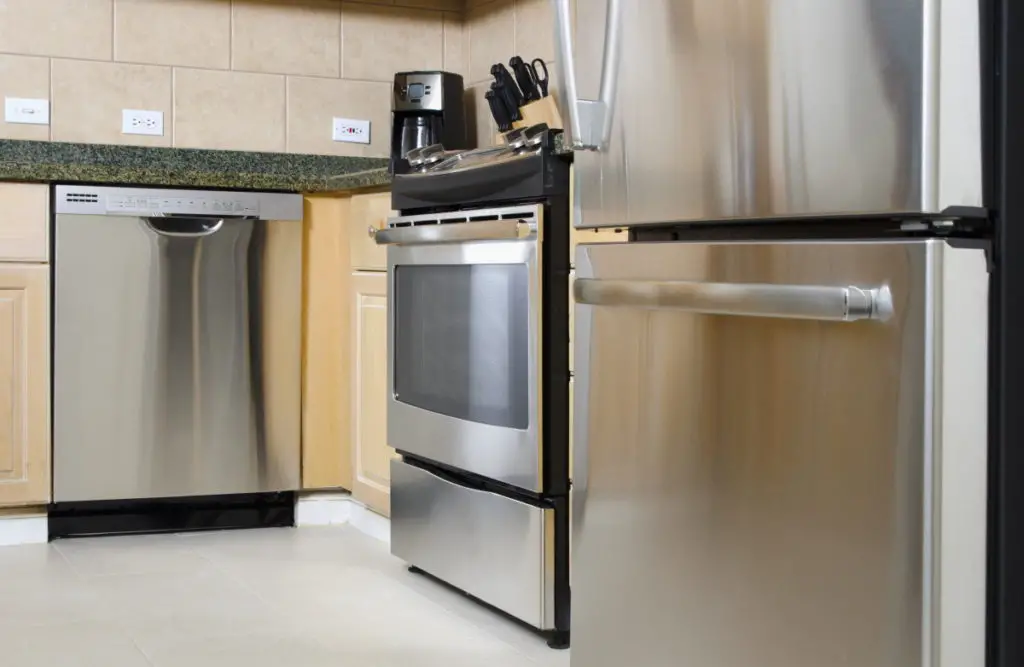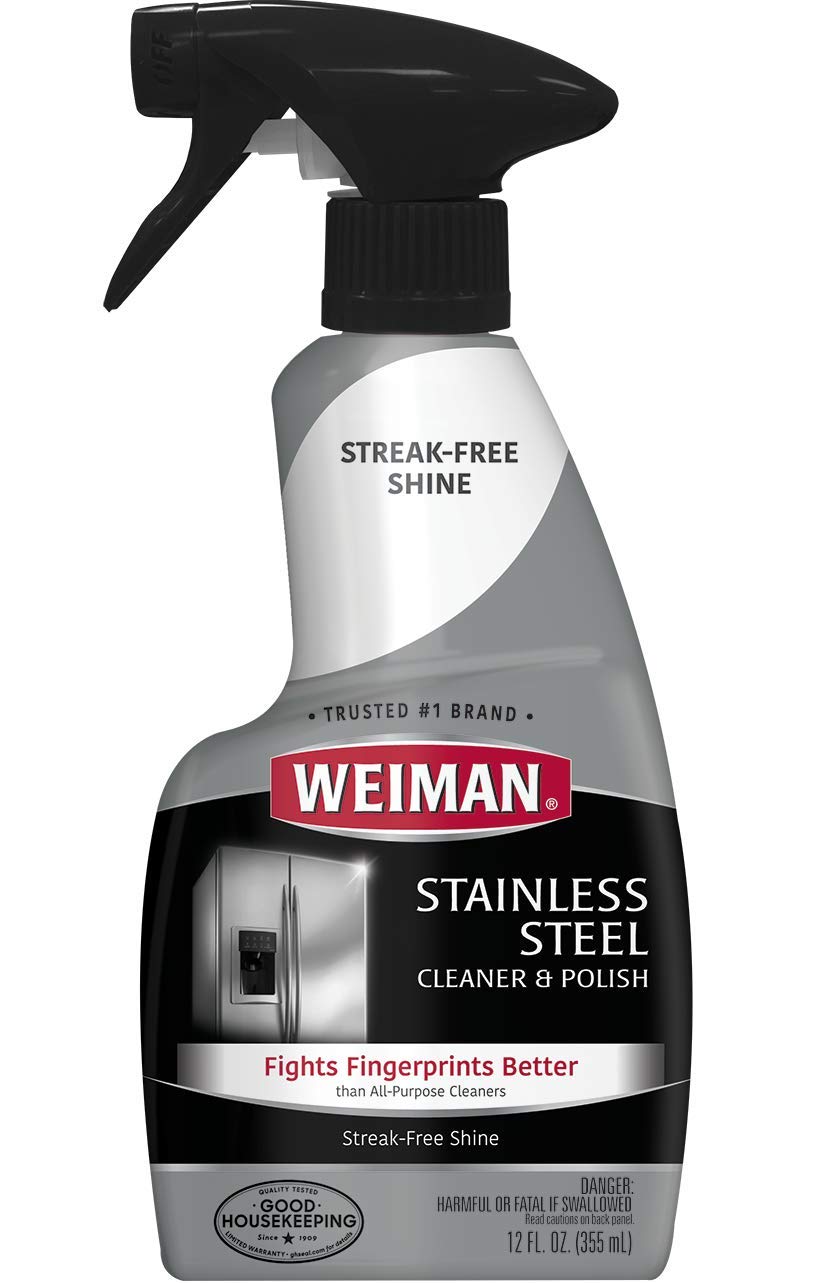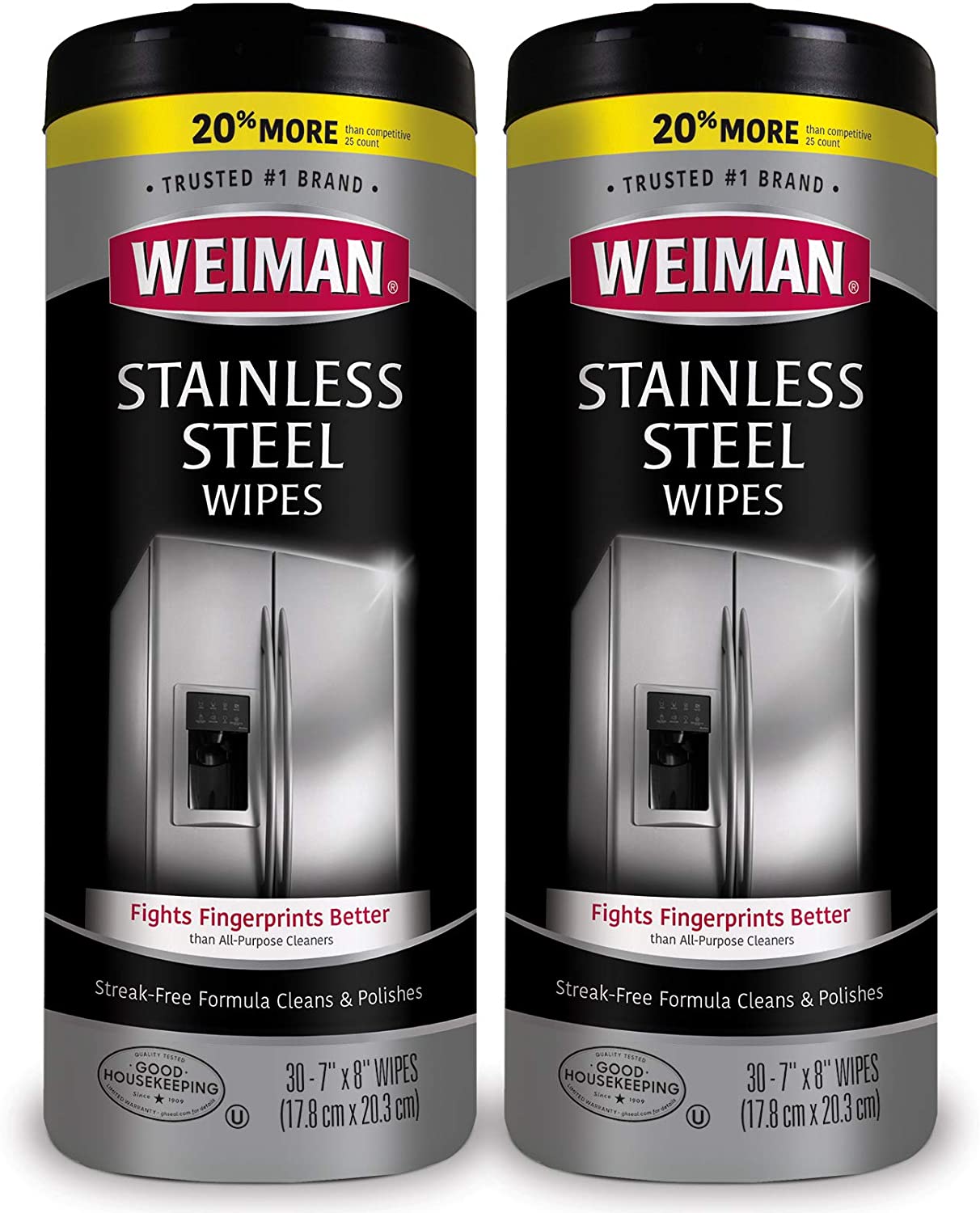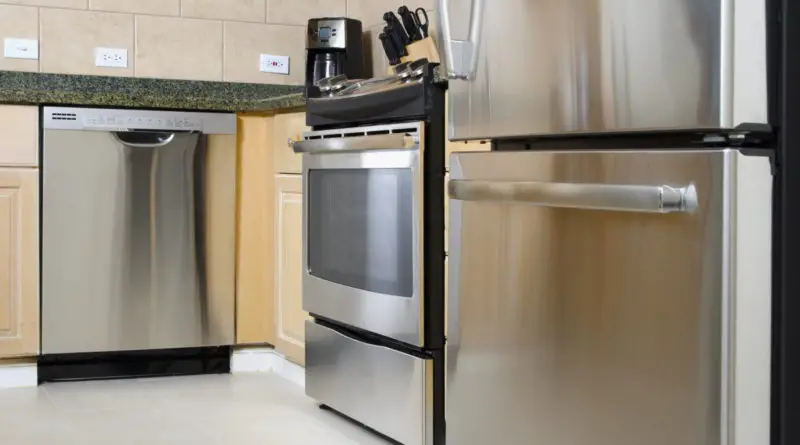How to Clean Stainless Steel Appliances
Disclosure: This post contains affiliate links. For more information see the Affiliate Disclaimer.

The popularity of stainless steel appliances has not diminished. More than 70% of top realtors say that traditional stainless steel is still your safest bet and the most in-demand variety among today’s homebuyers.
Now, you’ve likely felt some frustration with the fingerprints, water spots, and other stains that can appear on your stainless steel surfaces.
You’ll be glad to know that cleaning your stainless steel appliances is easier than you might think. Keep reading for some tips on how to clean stainless steel appliances.
Before Cleaning Your Stainless Steel Appliances
Before you dive in and start cleaning the smooth surfaces of your appliances, the following preparation is key:
1. Check your appliance’s user manual
Manufacturers have very specific instructions regarding the care of your appliance. You’d be surprised at the practical and important information hiding within the pages of the owner’s manual that many opt not to read!
This information does not just highlight the proper operation of the appliances, but, also contains some warnings that will help you lengthen the life of your appliances.
If you do not have a physical copy of the manual anymore, check the product website for an online version of the manufacturer’s instructions.
Be mindful that if your appliance is under warranty, anything you might innocently try while cleaning can potentially void the warranty. That’s something you do not want to happen and all the more reason to read the manual.
2. Prep your cleaning supplies
There are several ways to approach cleaning your stainless steel appliances. Whether you opt for using natural cleaners or the commercial route, you want to have your products on-hand and ready to go, when you are.
 |  |
| Weiman Stainless Steel Cleaner – Spray Buy on Amazon | Weiman Stainless Steel Cleaner – Wipes Buy on Amazon |
3. Prep your cleaning cloths
To protect the beautiful finish of your stainless steel, it is best to use soft cloths (such as microfiber cloths), to prevent scratching.
Avoid hard towels, sponges, or scrubs that might be too rough on the surface that you are trying to clean.
Never use sponges or cloths that were previously used for other cleaning activities – they can leave foreign materials that will be bad for the surface.
Step-by-Step Cleaning Process for Stainless Steel Appliances
1. Remove food
Using a wet cloth, gently remove any excess materials like pieces of food and grease from the surface of your appliance.
For dried-on food that is more difficult to remove, mix baking soda and warm water, and gently wipe the area with a clean, damp cloth, using the other side of the cloth to remove the residue.
2. Clean
Using your cleaner of choice, clean the surface in good, long swipes following the direction of the grain. Wipe down the surfaces, edges, and corners of the appliances.
Look out for stubborn stains and sticky fingerprints.
Follow this up with a complete rinse, making sure no spot is left with cleaner. After the rinse, dry the appliance completely with a dry microfiber cloth.
3. Polish
Adding a little shine never hurt anybody. Buff the surfaces with a small amount of olive oil, for a sleek look. You don’t need to add a lot to make the appliances look brand new and ready to use. You can even apply some specialized protectants available on the market that help avoid fingerprints and dust.
The Don’ts of Cleaning Stainless Steel Appliances
There are a few things to keep in mind when you clean your kitchen’s stainless steel appliances. This handy list will help you sort it all out.
- Don’t wait for food or grease to dry up. If you wait until the last minute to clean up spills and stains on your stainless steel, it will require more scrubbing effort which could damage the shine and look. Consider a weekly cleaning schedule.
- Don’t clean against the grain of the metal. Avoid using wide circles and short strokes while you clean your appliance. Those methods are the ways you get unsightly scrapes and scuffs on the surface.
A good tip is to follow the grain of the metal. - Don’t use steel wool or brushes. The beautiful, brand new finish of your appliances may look nice and strong, but they’re not immune to scratches. So, avoid using hard sponges, steel wool, brushes, scouring pads, and other such tools, to preserve the finish of your appliances.
- Don’t use abrasive cleansing scrubs. Connected to the item above, you will have to be careful about any scrubs and spot cleaning solutions you want to use for getting the job done. Some scrubs have rough materials that can ruin and scratch the surface of your appliances. This includes some scouring powders.
- Don’t use bleach or chlorine-based cleaners. Using harsh chemicals might get rid of really tough stains, but they could be a problem for the aesthetics of your appliances in the long run. These strong substances can eat away at the materials of your appliances and leave them weak to further external damage. This includes bleach, ammonia, chlorine, and other similar products.
- Don’t use hard water. These will leave some calcification or mineral stains that will look unsightly on your appliances. While hard water won’t cause damage, these spots and stains look terrible on smooth steel. As much as possible, filter the tap water that you use to clean your appliances, or, better yet, use distilled water.
- Don’t leave your stainless steel appliances wet. It’s important to wipe down as much moisture as possible from your appliances. The streaks and spots from water won’t do anything to your appliances but if left wet, they attract dirt, which can have the same effects as hard water. Always dry thoroughly, when cleaning.
Recap
In summary, follow these steps to clean your stainless steel appliances and restore the stainless steel finish:
- Remove residue from the surface.
- Clean in the direction of the grain with either homemade stainless steel cleaners or commercial cleaners, using a clean microfiber cloth.
- Polish with a small amount of olive oil for that extra shine.
- Avoid abrasive cleaners and scrubs.
- Clean regularly.
